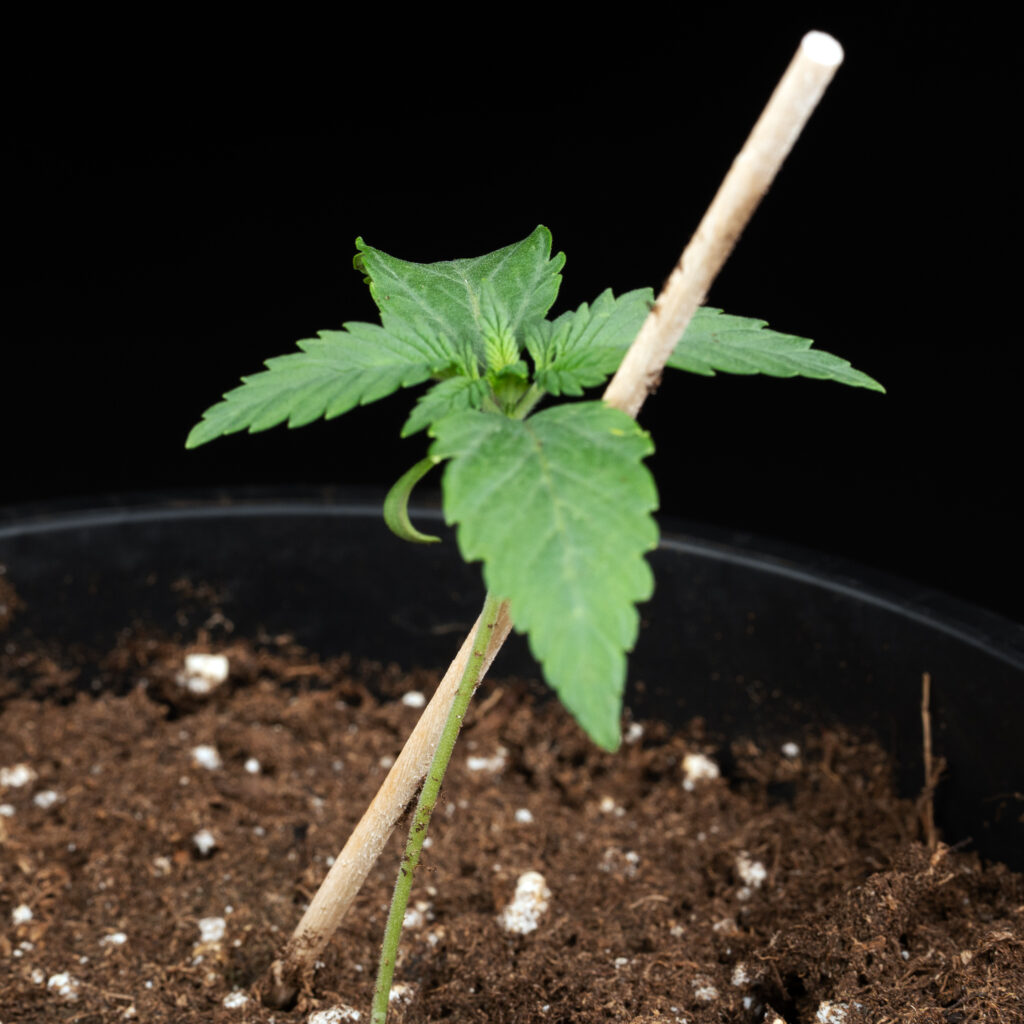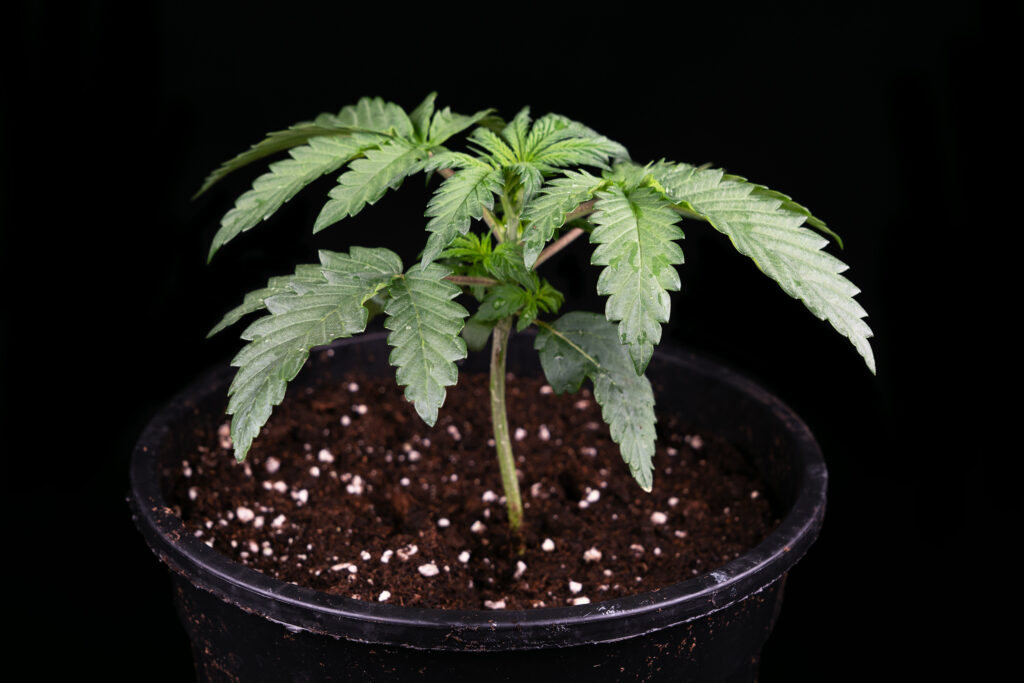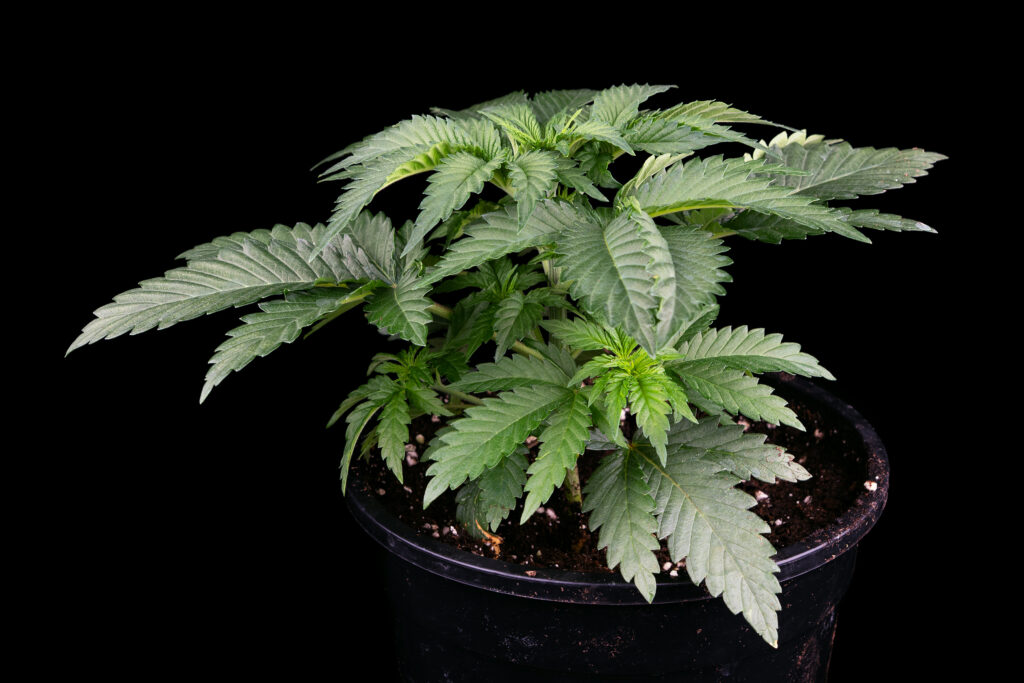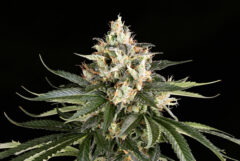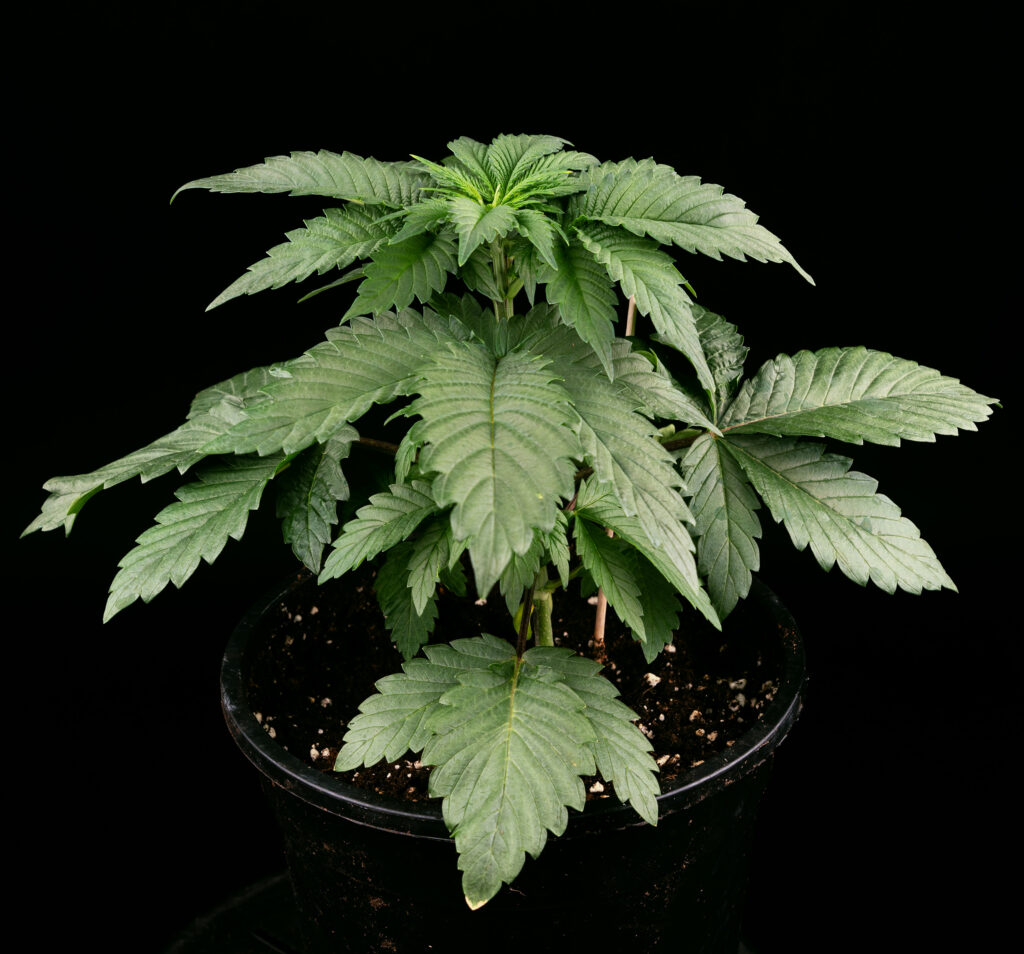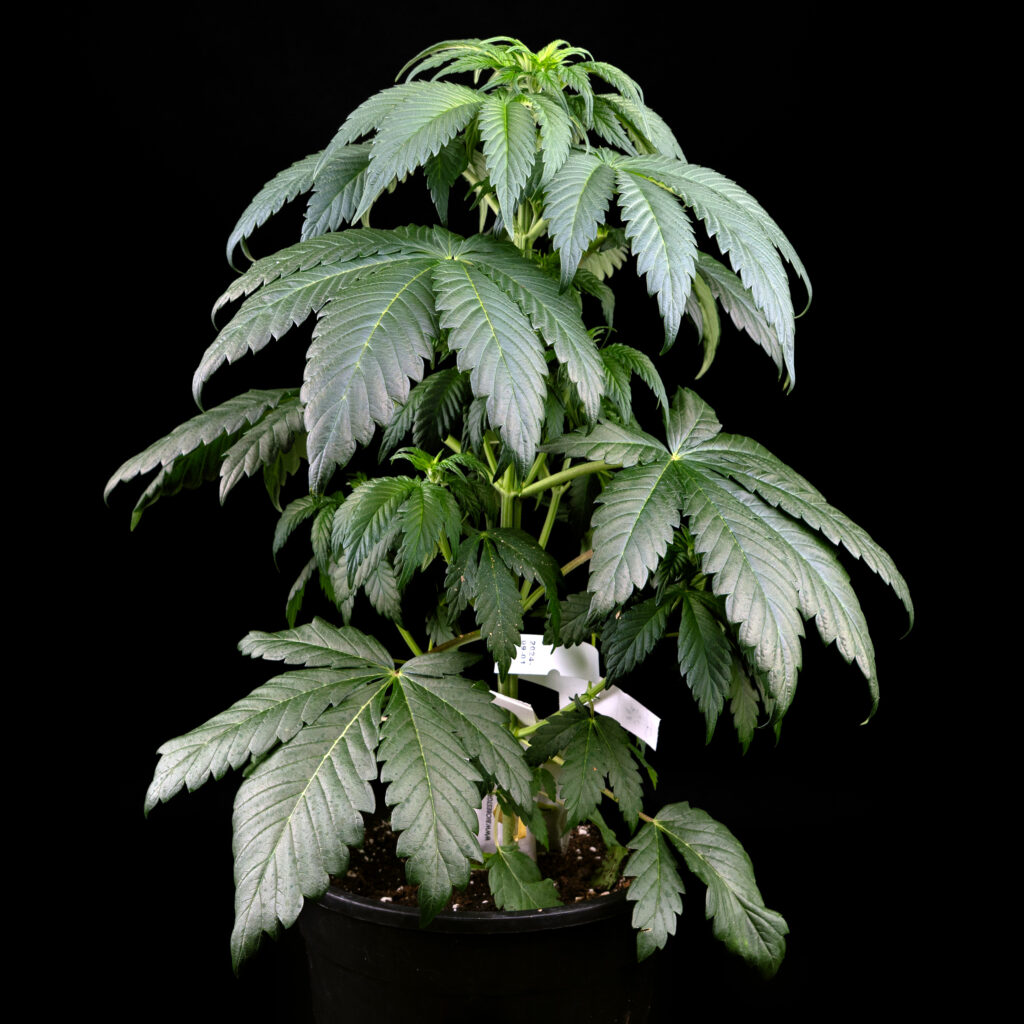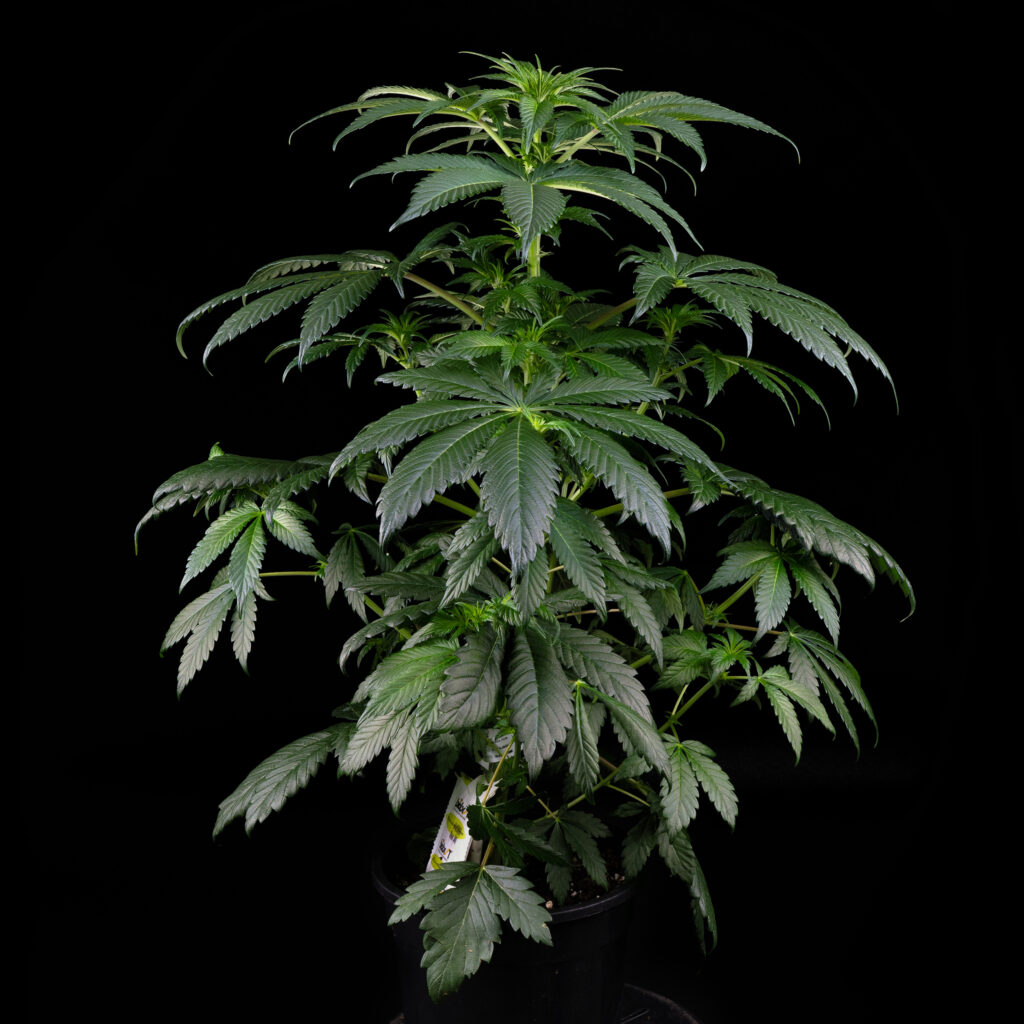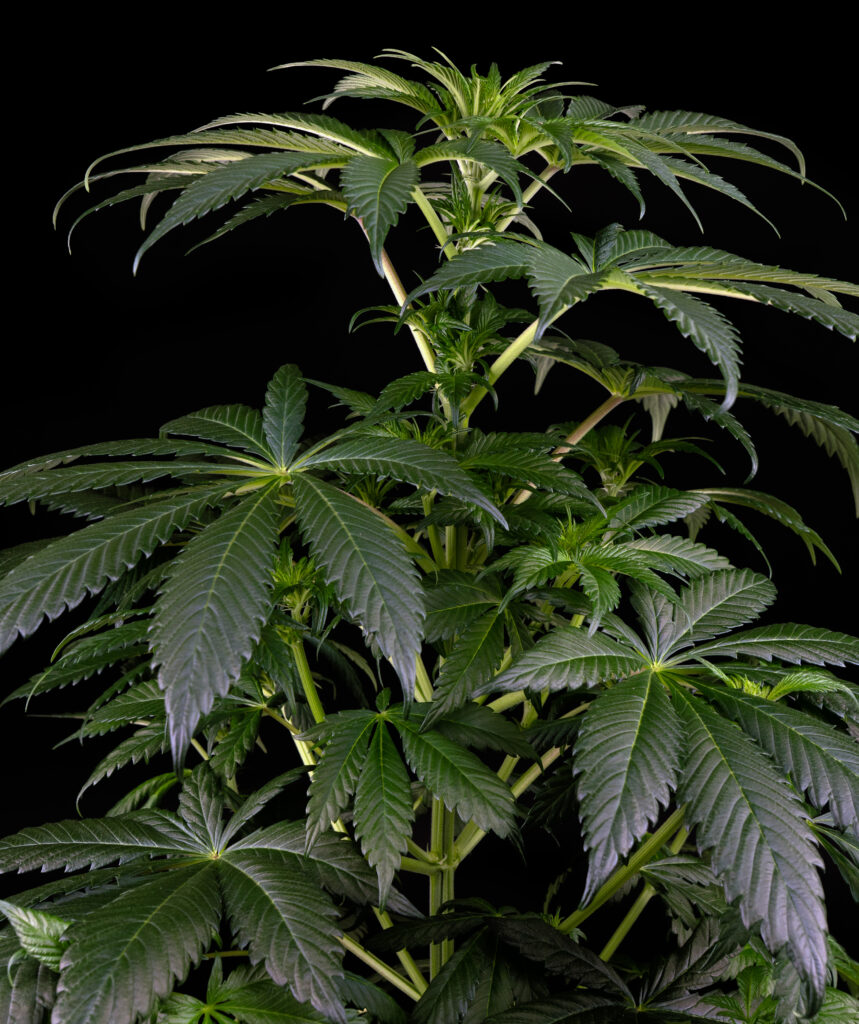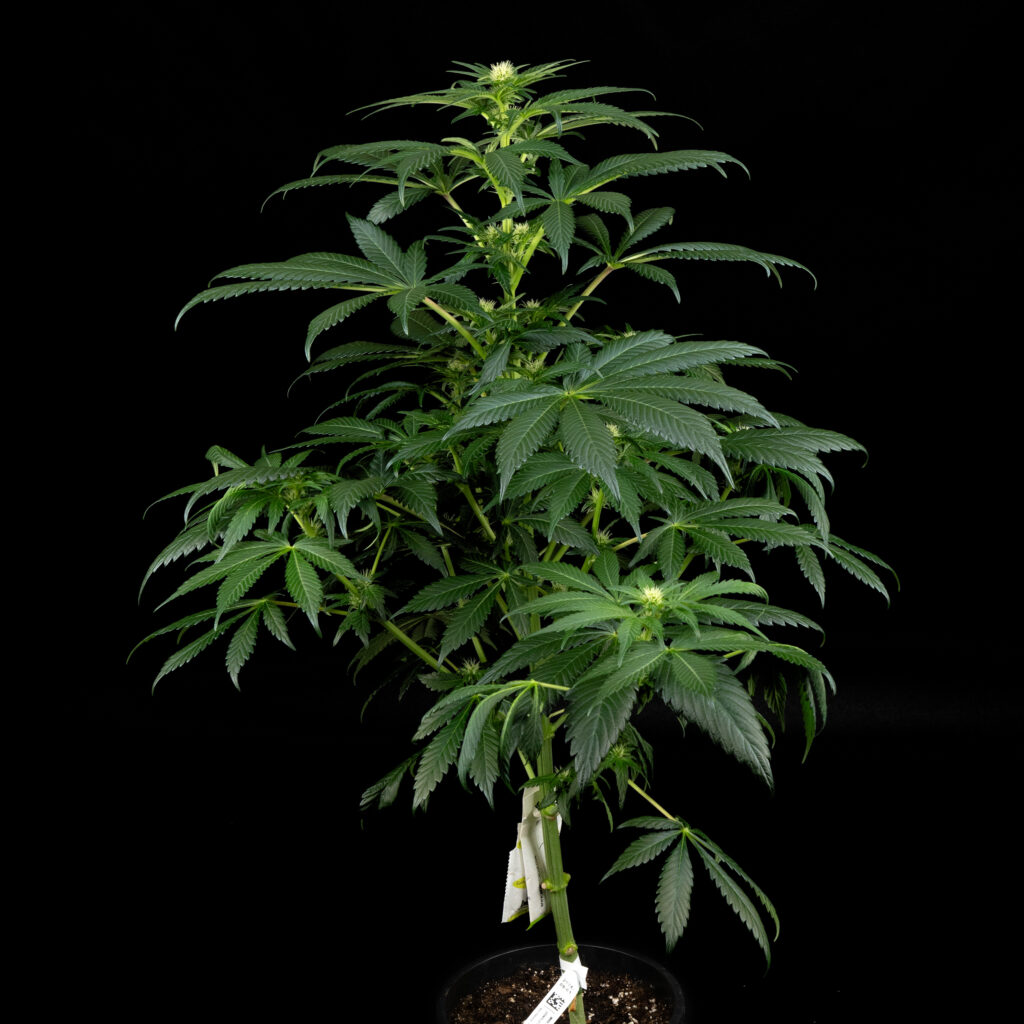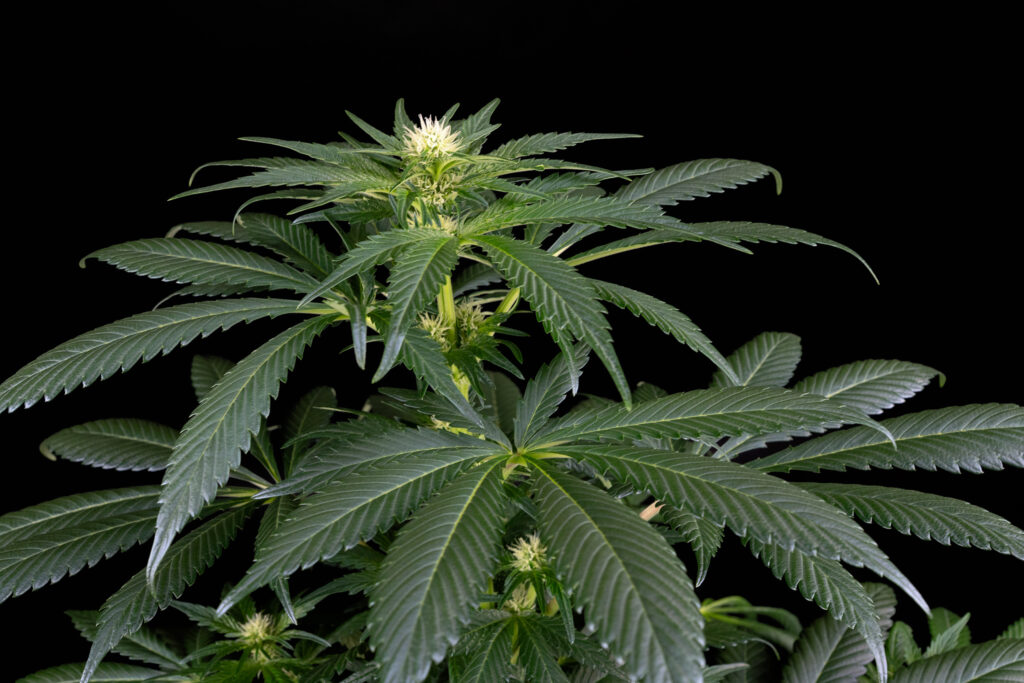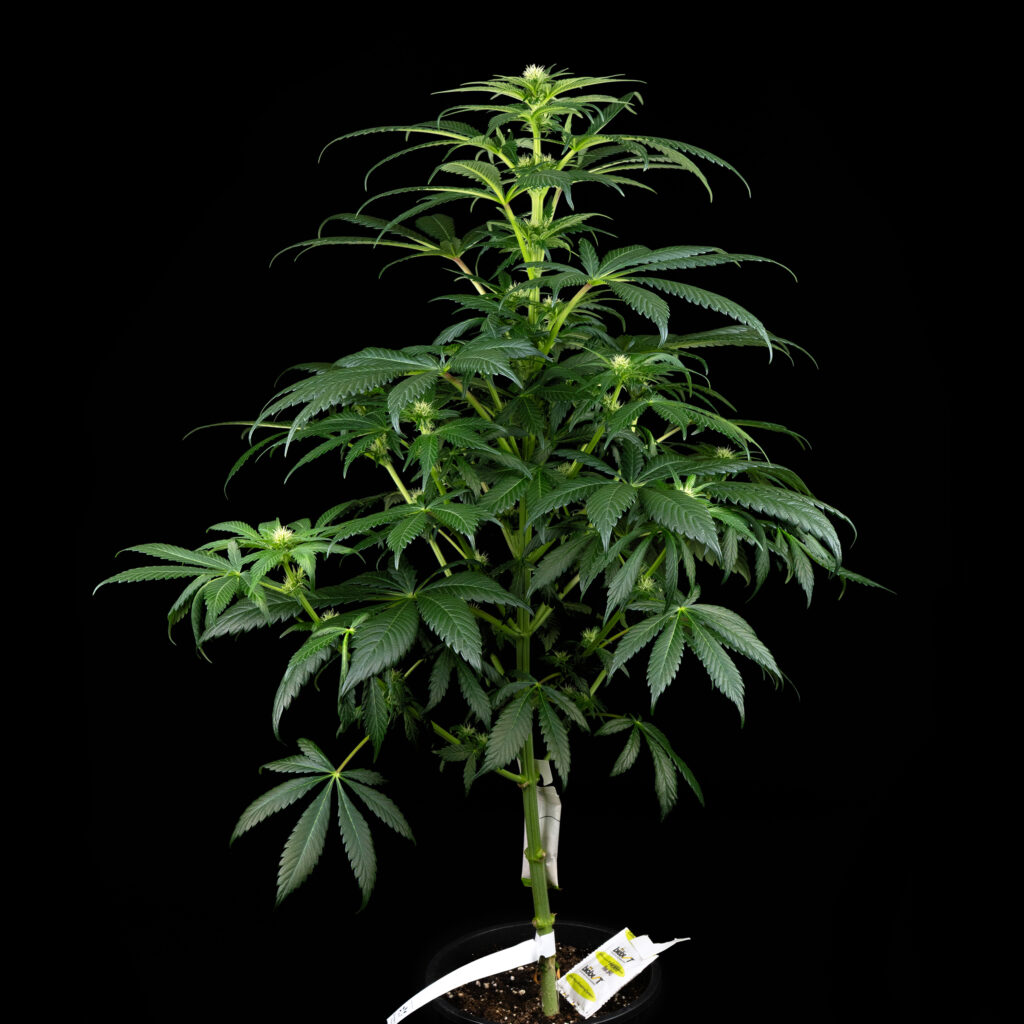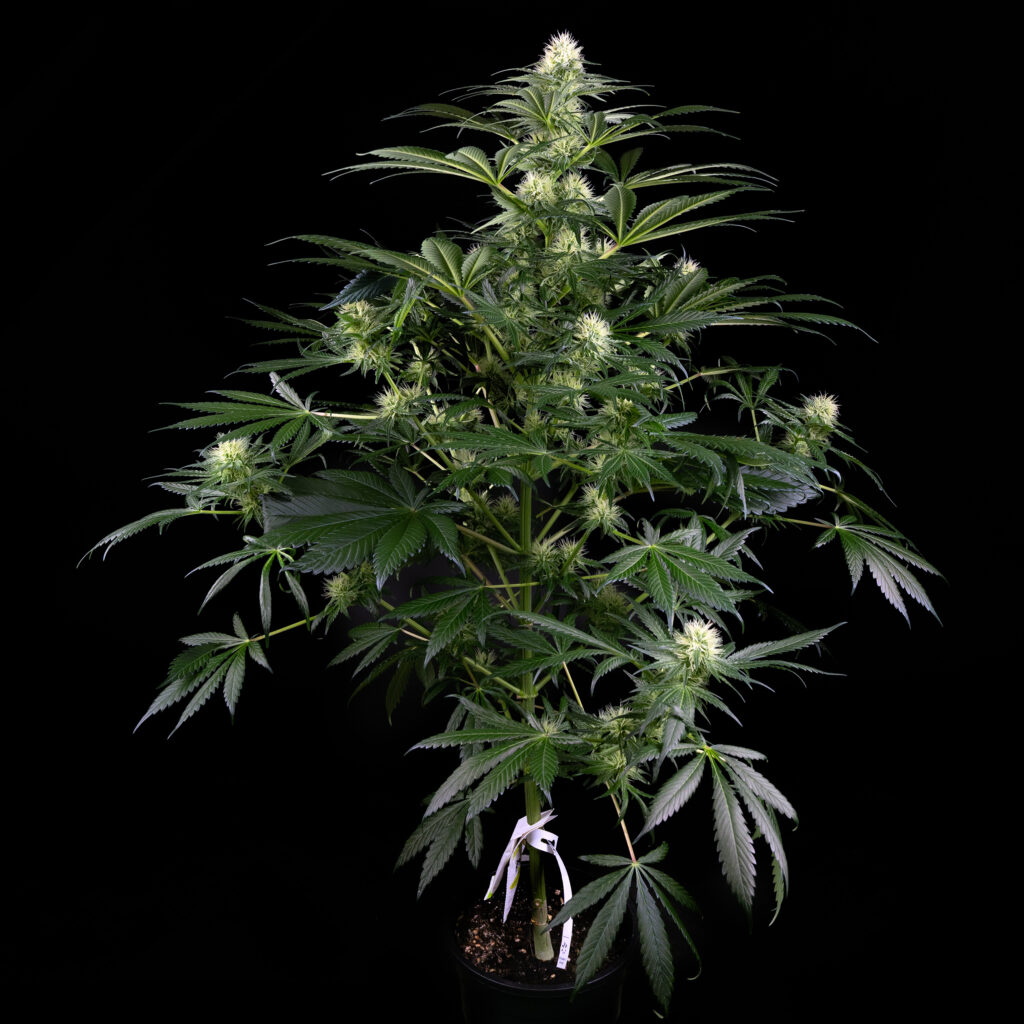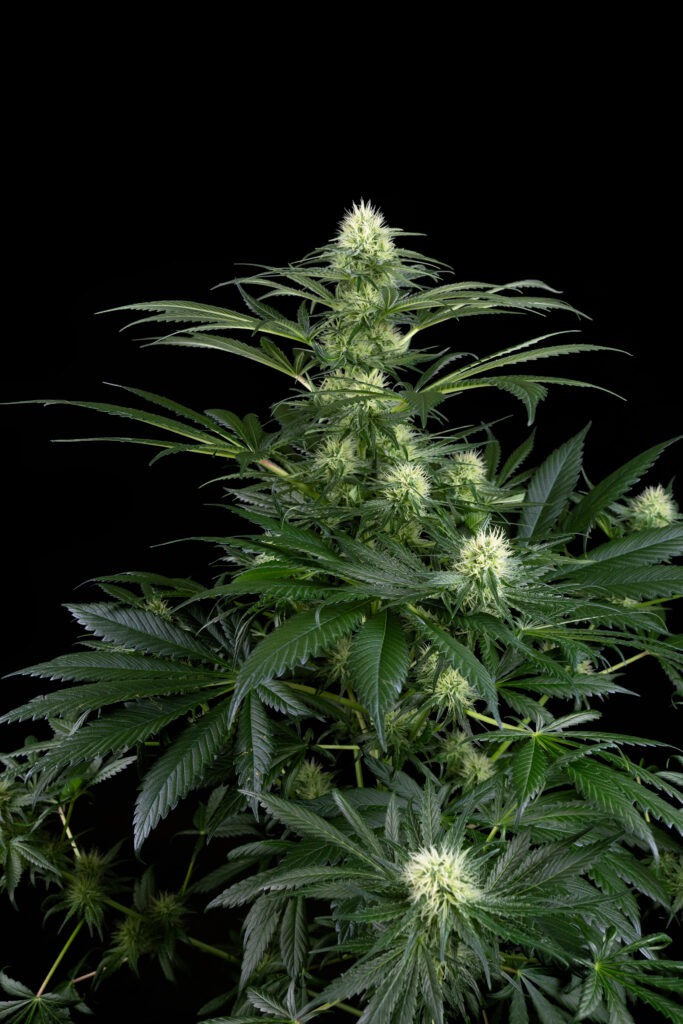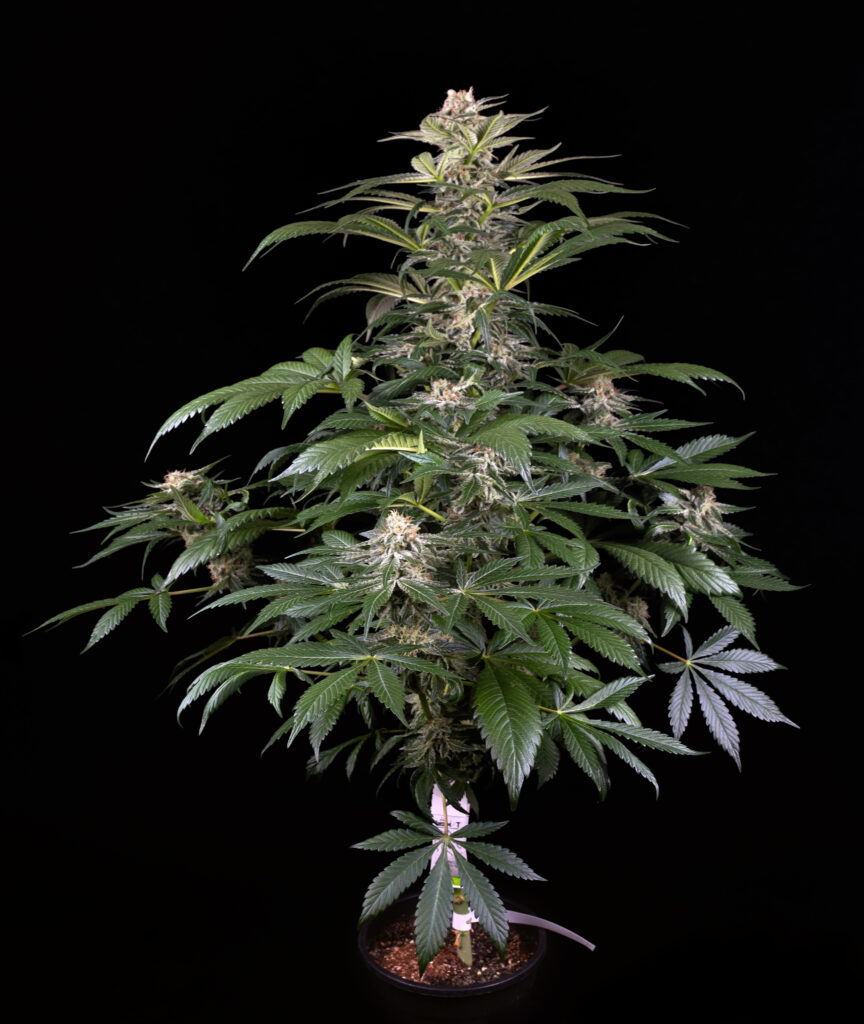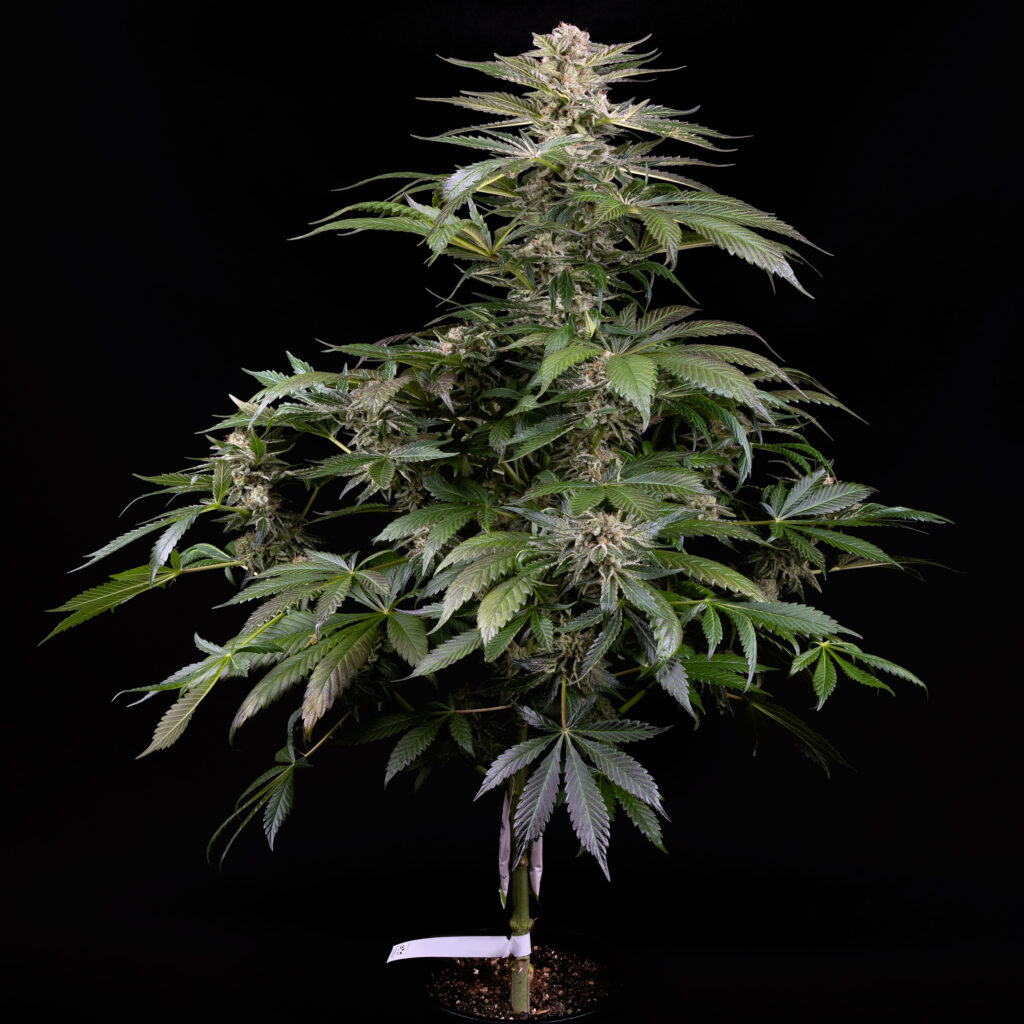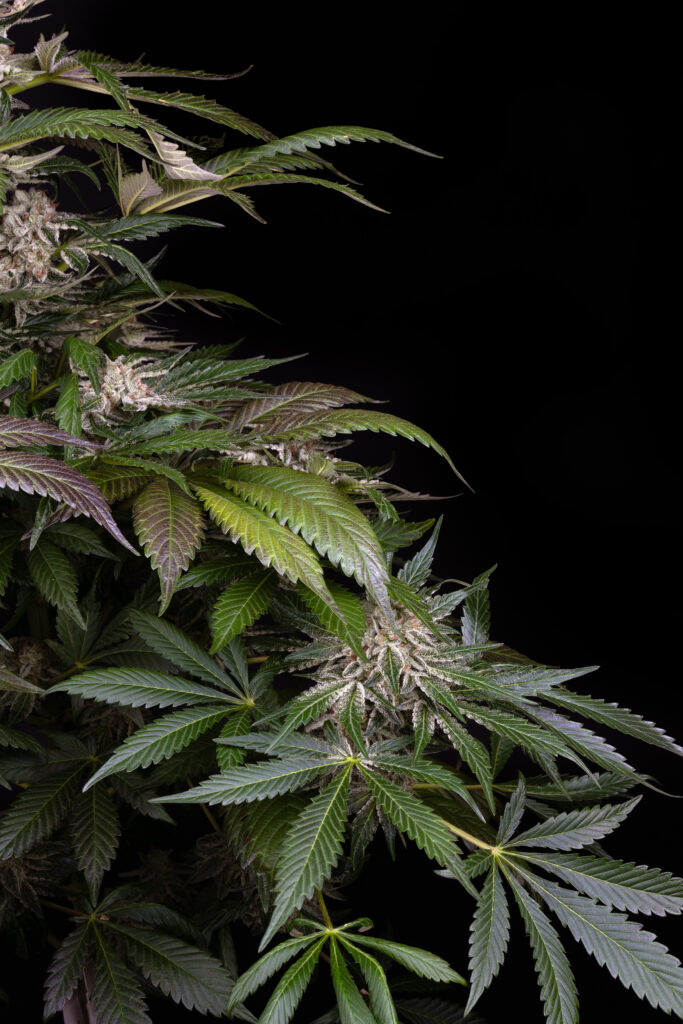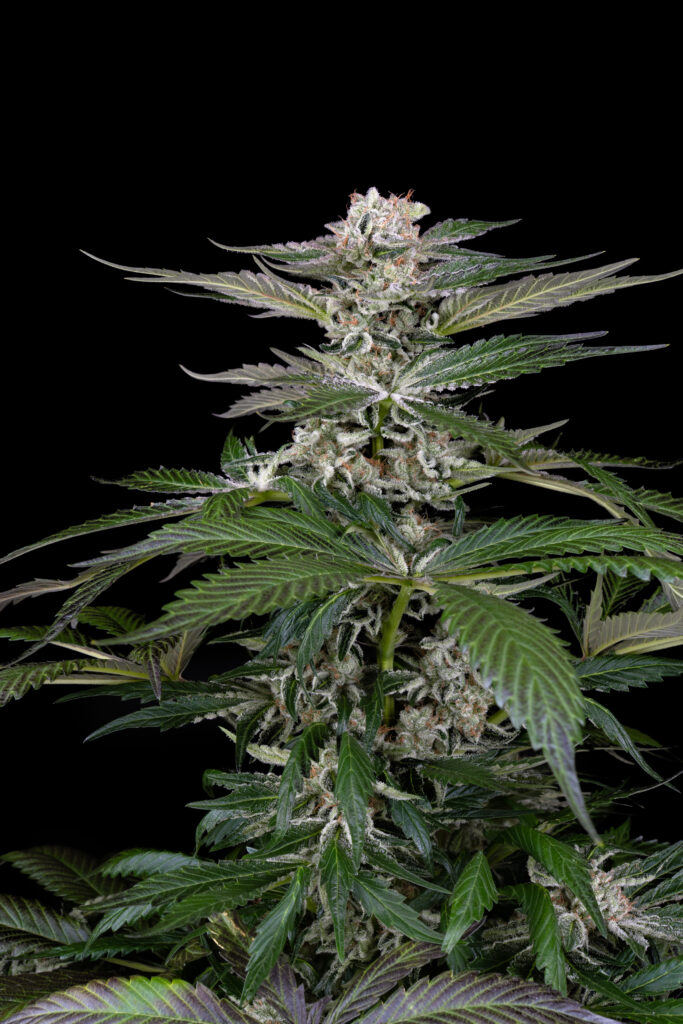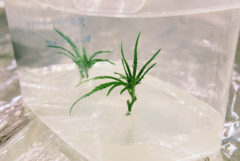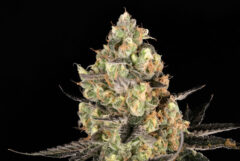In this report, we’ll outline our experience with Dosimosa Feminized. Overall, we were extremely impressed with this strain’s ease of growth and high-potency buds. If you’re looking for a no-nonsense strain that can fit almost anywhere without drawing attention, this one is definitely worth a look.
Total growing time: 90 days
Flowering time: 60 days
Final height: 97 cm
Final yield: 84 grams
THC content: 24.53%
To grow our Dosimosa Feminized cannabis seeds, we gave them the perfect environment for cannabis plants. For a light, we used a 1000 W Phillips GreenPower HPS light set to an 18/6 schedule, hung three metres from the ceiling, which allowed us to keep the space at a stable 23°C during the day while letting it drop to 21°C at night. At the beginning, we set the humidity at 65%, though we gradually lowered it as the plant matured. The plant itself was grown in an 8-litre plastic pot filled with BAC Lava mix.
Germination & seedling
As with every grow, we first needed to germinate our seed. As with all of our plants, we used the tried-and-true paper towel method as it’s the fastest, most reliable method and requires no specialised equipment. Aside from your seeds, you’ll only need some paper towels, a plate, and a plastic bag.
We started by folding up some paper towels and sprinkling several millilitres of water on them until they’re thoroughly damp, but not dripping wet. Next, we placed our seeds on top of the towel, making sure to leave a few centimetres between them. Lastly, we covered it all with another damp paper towel, put the whole thing into an open plastic bag, and left it in a warm place for a day or two until the seeds cracked open to expose the taproot.
After about a day, our Dosimosa cannabis seed had germinated, and we placed it in a wet Rockwool cube (taproot facing down) under a 600 W light. For the next few days, we mostly left it alone and waited for the plant to sprout.
At this early stage, seedlings are incredibly fragile, and too much water, light, or heat can keep them from sprouting at all. After three days, we gave our seedling its first feeding with 100 ml of pH-balanced water (pH 6.2; EC 0.8) mixed with a small amount of rooting hormone.
Vegetation
By the end of week one, our plant had sprouted and was standing an impressive 13 cm tall with multiple sets of leaves on top of a slender stem. At this point, it was time to move our plant to its new home in the aforementioned 8-litre plastic pot, set it under our 1000 W lamp, and we began daily feedings with 200 ml of water (pH 6.0; EC 1.4) mixed with Bio Grow liquid nutrients.
In week two, our plant grew to 24 cm tall and sprouted multiple new sets of leaves with extremely tight internodal spacing. These leaves were short, broad, and a perfect shade of deep green. At the inner nodes, we were already seeing the first signs of lateral branches, and things were off to a great start.
Week three saw consistent growth as our plant shot up 9 cm to a new height of 33 cm. This fairly rapid height gain was accompanied by robust vegetative growth as the plant grew multiple new sets of leaves and its first lateral branches began to grow outwards from the main stem. The internodal spacing remained incredibly tight, and it was quickly becoming clear that this was going to be a short, bushy plant. To make sure that it had everything it needed for the coming weeks of rapid growth, we upped the water to 400 ml per day.
Before flowering, we hung small satchels of Neoseiulus californicus and Amblyseius swirskii from the plant’s lowest branches. These packets contain hundreds of tiny creatures that have developed a symbiotic relationship with cannabis plants. These small critters don’t harm plants but feed on parasites like spider mites and thrips, which can cause krill even the healthiest plant if allowed to run wild. We replace these satchels every four weeks to maintain a constant supply.
Flowering
In week four, we switched our Dosimosa Feminized cannabis plant over to flowering by flipping our lights to a 12-hours-on-12-hours-off schedule and switching over to Bio Flower liquid nutrients mixed with 800 ml of water (pH 6.0; EC 1.8). This week saw growth slow down slightly as our plant gained only 6 cm to reach a new height of 39 cm. This somewhat slow vertical growth was paired with noticeable development of the lateral branches, and the entire plant was covered in thick, broad, dark leaves. Overall, though, the plant was still growing more upwards than outwards.
Week five saw more steady growth as our plant gained another 7 cm to climb to 46 cm in height. The lateral branches were still growing slowly, and the entire plant was taking on a narrow, cylindrical shape as the internodal spacing was gradually expanding. With flowering expected to start any time now, we upped the volume of water to 1000 ml per day.
In week six, our plant saw its single largest week-on-week growth, gaining 12 cm to grow to 58 cm tall. By now, the internodal spacing had expanded considerably, and the lowest lateral branches were beginning to grow well away from the main stem. While we still weren’t seeing any sign of flowering, we increased the volume of water to 1500 ml per day. This would not change for the remainder of the grow.
In week seven, our plant grew to a very nice 69 cm tall and finally began to show the first signs of flowering as small clusters of white pistils appeared at the tips of each branch. The internodal spacing was continuing to stretch, and the lower branches had grown outwards enough to give the entire plant the classic Christmas tree look so common among indicas.
Week eight saw our plant transform rapidly, growing to 78 cm while its flowers exploded. By the end of the week, the main cola was almost fully formed, and each lateral branch was covered in dense, heavy buds which were growing noticeably larger with each passing day.
In week nine, our plant continued its steady growth and grew to 86 cm. By now, the lateral branches had almost stopped growing and were still fairly short. However, the upper two-thirds of the plant was covered in a single massive cola, which was truly impressive.
Weeks ten and eleven saw our plant undergo its final burst of growth, reaching its final height of 97 cm. Gradually, the pistils were turning orange, and the entire plant was showing that it was very nearly time to harvest.
Finally, in week twelve, we harvested our Dosimosa Feminized plant.
Harvest
As soon as it was time to harvest our Dosimosa Feminized cannabis plant, we cut it down at the base, trimmed off all of the fan leaves, and hung it upside-down to dry. We kept our drying area at a temperature of 15.5°C with a relative humidity of 55%, and the plant was left here until the smallest branches were dry enough to snap when bent; typically, this requires 10-20 days.
Once the plant was dry enough, we removed the buds and trimmed away any remaining leaves. As this strain produces bushy, leafy indicas, this step was fairly time-consuming as the flowers were all covered in tiny sugar leaves. On a positive note, this trim all makes fantastic fuel for extracts. Once the buds were trimmed up, we put them into glass jars for curing.
To start, these jars were left open and unsealed for 24 hours to allow the majority of any remaining moisture to evaporate. After about a day, the jars were sealed and then “burped” for one hour multiple times each day. The frequency of these burps was slowly reduced to only once a day at the end. Overall, the entire curing process takes an average of 4-6 weeks and can’t be rushed.
Once everything was said and done, we were able to pull a total of 84 grams of flower with an impressive THC content of 24.53%. While this might not be the largest harvest we’ve ever pulled from a single plant, when you consider the plant’s compact size and high potency, this is a seriously impressive result, and growers who can put a little more time in the vegetation stage will see their yields increase significantly.
Terpene profile
While growing, Dosimosa Feminized cannabis plants emit a remarkably mild odour which blends subtle hints of sweet citrus with more prominent notes of fresh-baked cookies. Hiding underneath all of that, tropical fruity notes and a hint of spice round out the complex aroma. When combined with this strain’s compact size, this mild smell makes this the perfect plant for growers who value their privacy.
After curing, the buds take on a rich, earthy, cookie-like aroma with hints of sweet citrus and berry, which are all present in the flavour. Dosimosa Feminized is incredibly smooth and creamy with notes of fruit on the front end and Mimosa’s (one of the parent strains) fruity tang rounding out the exhale.
Dosimosa’s effects are the perfect blend of its parents: the deep body stone from Dosidos’ hits hard with a powerfully relaxing high that soothes aching muscles and eases stress. That’s all balanced out by the Mimosa lineage, which shows itself as a slightly more uplifting cerebral euphoria that will keep your mind on the task at hand. On the whole, Dosimosa Feminized is a perfect choice for unwinding at the end of a long day or just taking the edge off without locking you to the couch.
The outcome
While Dosimosa Feminized might be a production powerhouse, the incredible potency and quality of the buds more than make up for the strain’s somewhat limited yield. Growers looking to spend a little extra time vegetating these plants can make the most of this strain, making it ideal for most indoor setups.
- Disclaimer:Laws and regulations regarding cannabis cultivation differ from country to country. Sensi Seeds therefore strongly advises you to check your local laws and regulations. Do not act in conflict with the law.







